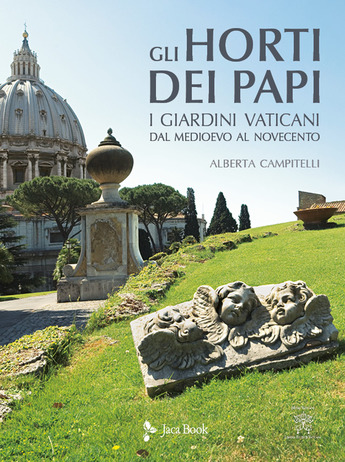VATICAN GARDENS
From the Middle Ages to the twentieth century
- Category: Architecture
- Author/Editor: Alberta Campitelli
- Format: Illustrated/Hardback
- Dimension: 21,5 cms x 29 cms or 24 cms x 32,5 cms
- Pages: 356
- Price: 50 €
- Year: 2021
- Rights Sold: English, French, Spanish
- Signs:
Review
A volume that frames the Vatican gardens as an essential milestone in the history of the Western garden and in the history of art. The gardens are analyzed in their symbolic meanings, in the coexistence of productive activities and functions of delight, in the functions of decoration and support to botanical sciences. We cannot talk about the famous Roman gardens, inside the city and in the countryside, without remembering that the Vatican gardens were built before them in the Middle Ages: they were the object of imitation for Roman gardens. The first news on the Vatican gardens comes to us in relation to some transformations that took place in the thirteenth century. The last major changes will take place in the 1930s, when the Vatican became a state. This publication traces their entire history, highlighting achievements, experiments and transformations that concern 22 of the 44 total hectares of the Vatican City. Based on an extensive research of the original documents, it was possible to reconstruct the origins of the gardens and the presence of a collection of plants such as to make them considered the oldest botanical garden in Italy. The importance of water, both as a symbolic element and as a source of life for plants and fountains, is a theme that runs throughout history, especially after the creation of the spectacular and scenographic fountains commissioned by Paul V. No less interesting is the reconstruction of gardening practices, up to the elimination of every element of rurality to allocate all the available space to beauty and decoration. A chapter is dedicated to the villas where the popes used to go for vacation, before Castel Gandolfo became the official summer residence.




 Read Description
Read Description